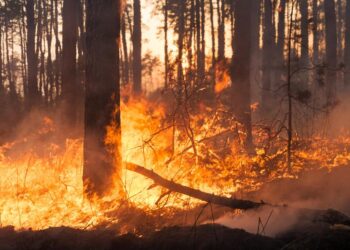Label indoor and outdoor shut-off vales on water, sprinklers and gas lines. Be sure personnel knows how to use the shut-off valves as well as when to use them. Check pipes for damage or substantial wear to avoid leaks.
(Credit: Shutterstock)
Develop and review emergency plans. Be sure to host practice sessions for employees.
(Credit: B Brown/Shutterstock)
Review and update business continuity plans, which should include alternative suppliers if a major disruption occurs.
(Credit: Indypendenz/Shutterstock.com)
Perform maintenance on fleet vehicles, including checking wiper blades, tire pressure and treads and oil filters. Any power equipment, including emergency generators, should undergo necessary maintenance. Have fire and smoke detection systems tested.
(Credit: WR7/Shutterstock.com)
Check sidewalks and parking lots for cracked pavement, potholes and other hazards. Exterior foliage and trees should also be inspected to prevent potential property, roof or power supply damage. If the facility includes rec areas, such as playgrounds and pools, be sure these areas continue to be safe following the winter.
(Credit: northlight/Shutterstock.com)
Review flammable and combustible liquids that are stored on the premise and discard any materials not used within the last year.
(Credit: Saverio blasi/Shutterstock.com)
Remove clutter and debris from the interior and exterior of the property, cleaning gutters and downspouts, surface drains and grates. Roof inspections should also be conducted, while drains should be checked for erosion or changes to drainage paths.
(Credit: Shutterstock.com)
Conduct an assessment as soon as it is safe to do so. Inspect all fire protection equipment for physical damage. Have any other damage equipment cleaned, dried out and the electrical insulation tested.
(Credit: Hilliard Martinez Gonzalez)
Service heating equipment before turning it back on. Monitor portable and emergency power suppliers for carbon monoxide buildup, power back feeds and improper fueling.
(Credit: oasisamuel/Adobe Stock)
This spring is anticipated to see an increase in severe weather, with the Colorado State University’s Department of Atmospheric Science predicting 19 named storms for the season. This follows an above-average 2021, which was the third-most active hurricane season on record.
“No matter how prepared you are, accidents and losses can happen in an instant,” Monique McQueen, assistant vice president, CAT claims, QBE North America, said in a release. “We recommend business owners regularly check in with their insurer to discuss any changes to their operations and property, including employee workplace changes and new or updated equipment.”
The above slideshow highlights cleaning, maintenance, planning and disaster response tips commercial policyholders should take coming out of winter and heading into spring’s threat of extreme weather, according to QBE North America.
“Being aware of the current state of your business, identifying potential risks and addressing vulnerabilities will better prepare business owners should something go wrong,” Jan Young, vice president, loss control leader, risk solutions, QBE North America, said in a release. “Having a plan in place at the start of each season will not only help minimize loss from a disaster, it can also help ensure a quicker and smoother recovery.”









